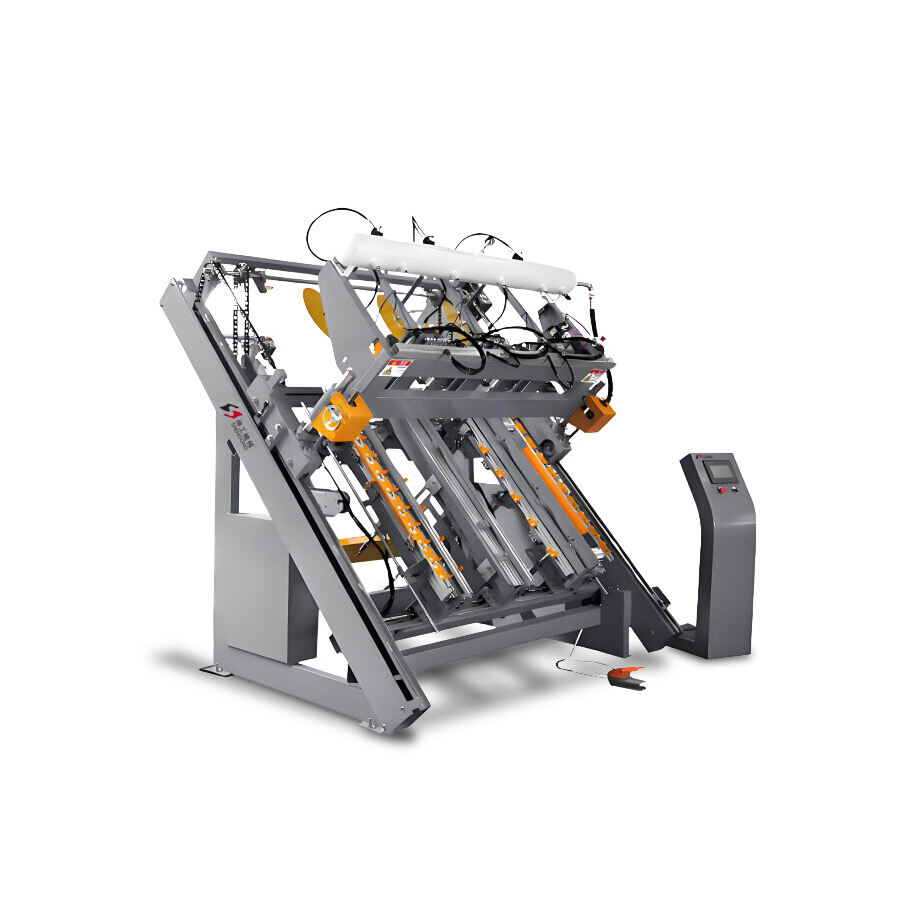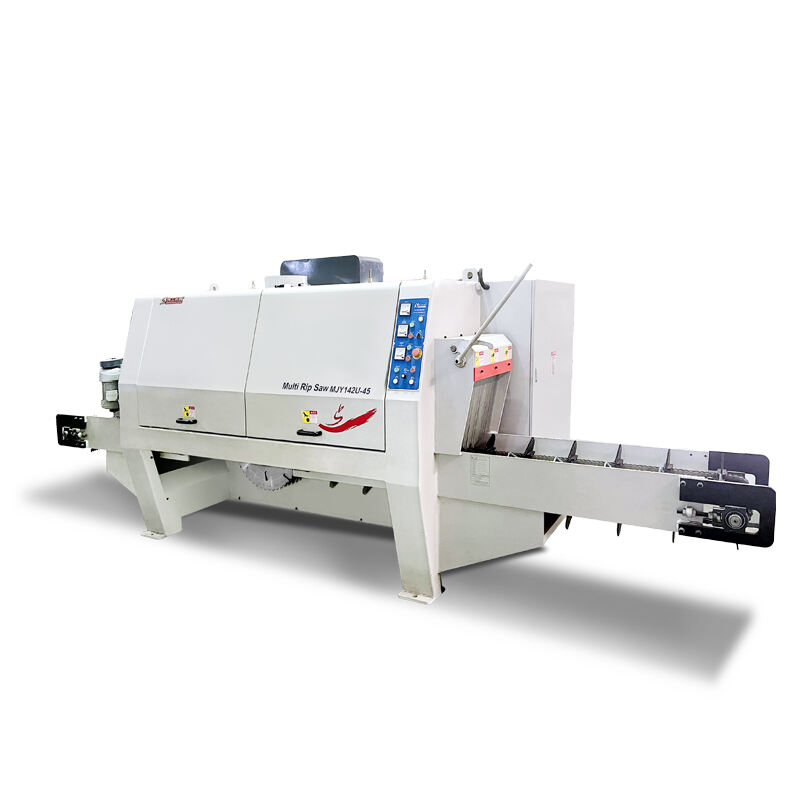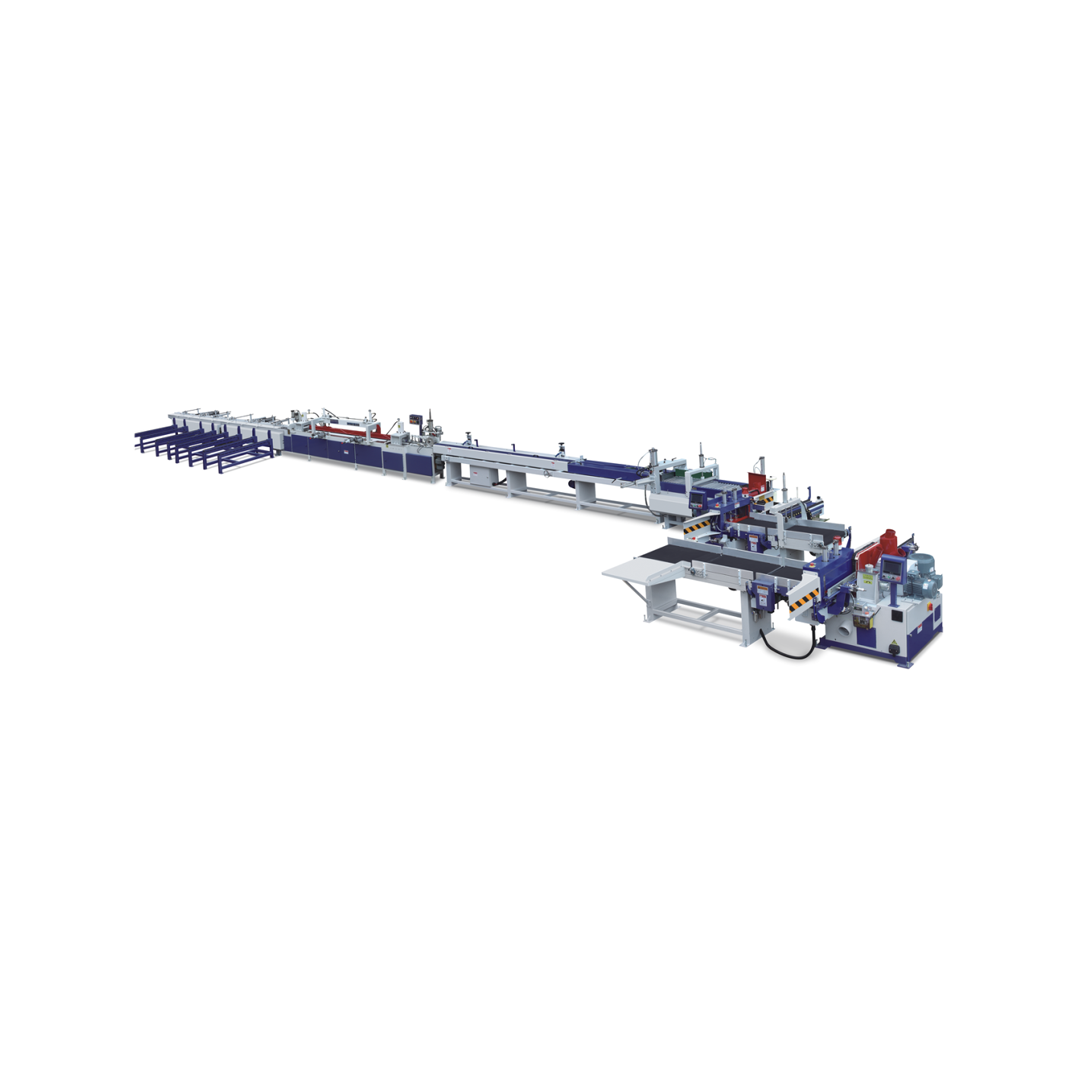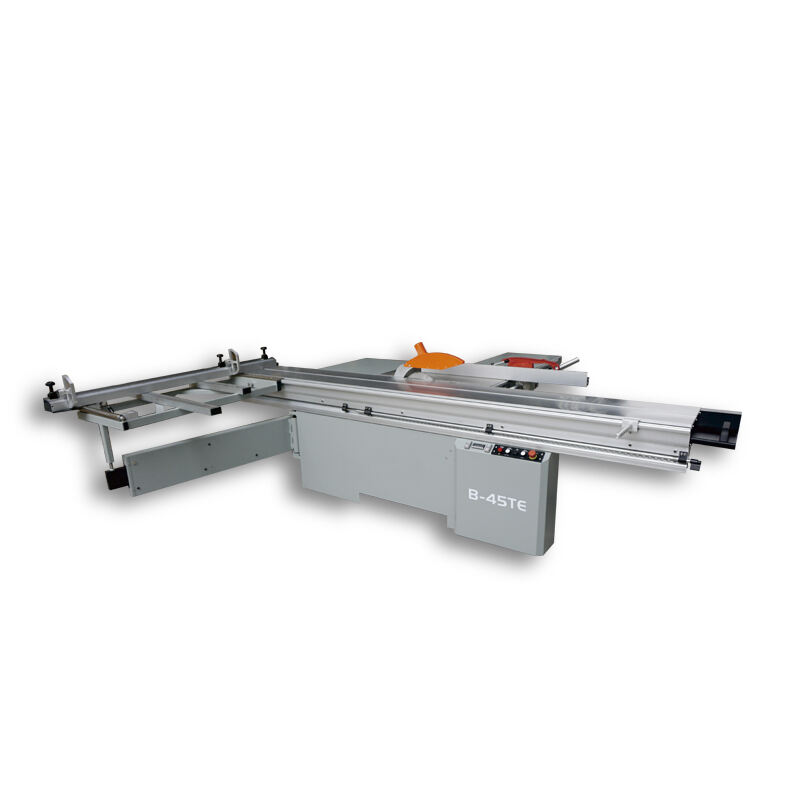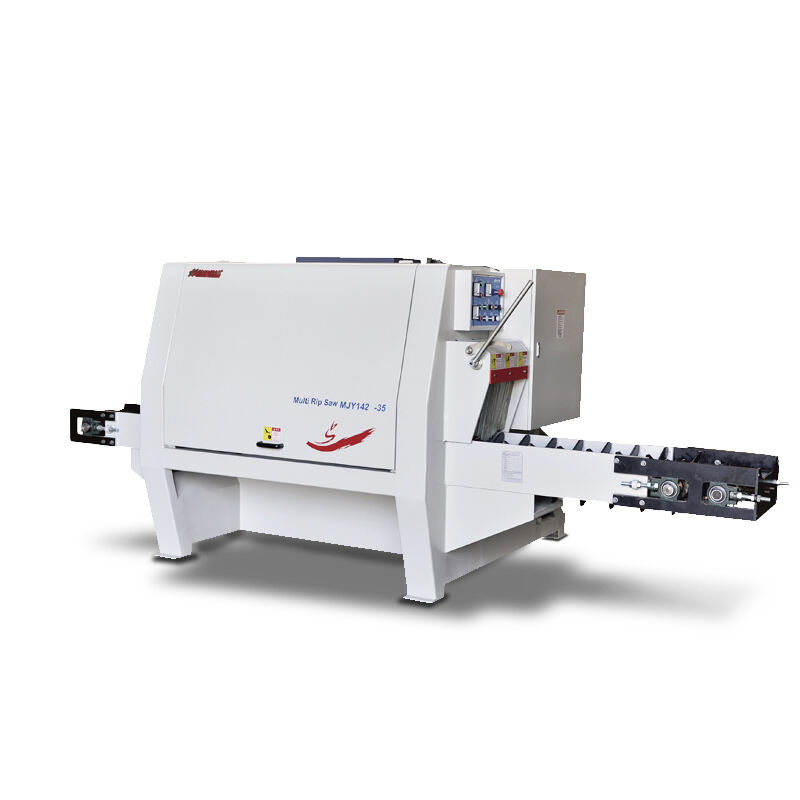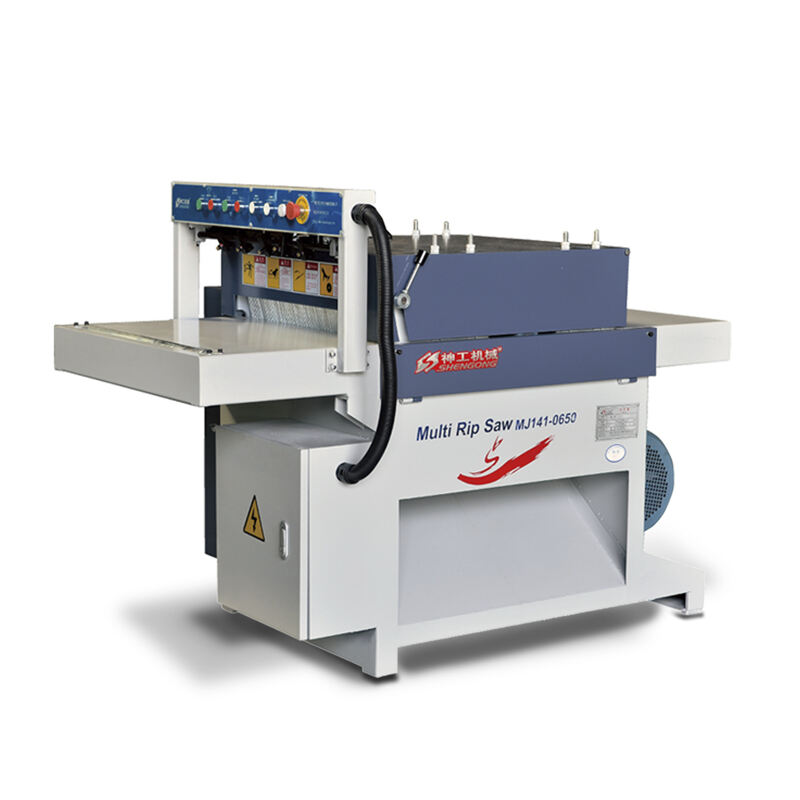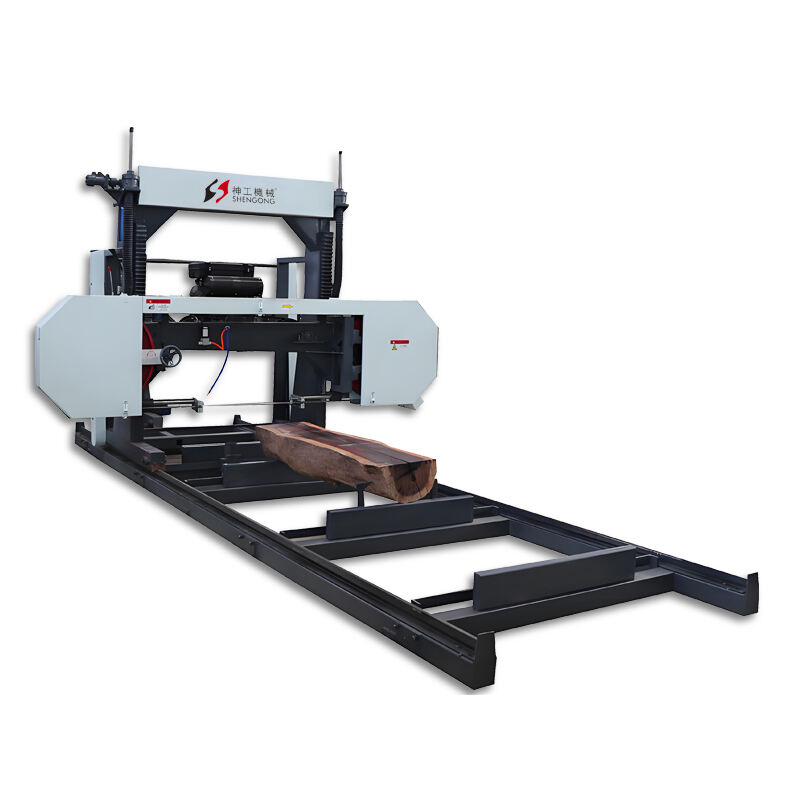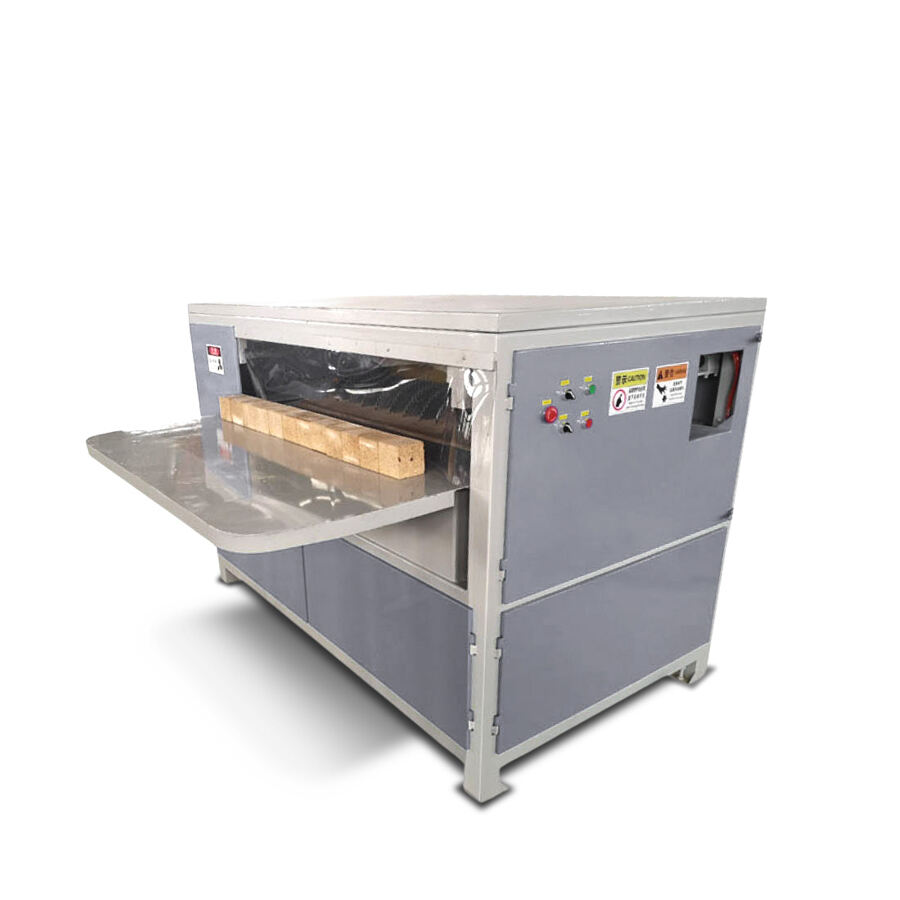Understanding Multi-Blade Saw Equipment for Boards
Multi-blade saw equipment is a sophisticated tool vital for woodworking, specifically designed for cutting boards with precision and efficiency. It comprises several key components, such as saw blades, which handle the actual cutting process; the arbor, which holds the blades; and the power source, which provides the necessary energy to operate the machine. These essential parts work together, ensuring that the saw cuts through the wood smoothly and accurately. Multi-blade saws are predominantly used in sawmills and manufacturing facilities where high production speed and impeccable accuracy are required.
Selecting appropriate multi-blade saw equipment is crucial for optimizing efficiency, safety, and the quality of finished products in woodworking operations. The right equipment can drastically reduce waste, minimize downtime, and maintain high production standards. Using a well-matched tool not only enhances safety by reducing the risk of accidents but also ensures a cleaner, more accurate cut. This directly translates to superior product quality, making it paramount for businesses in the woodworking industry to invest in the correct multi-blade saw equipment tailored to their specific operations.
Key Factors to Consider When Choosing Multi-Blade Saw Equipment for Boards
When selecting multi-blade saw equipment for boards, it is essential to understand the different types available and their specific applications. These machines vary widely, encompassing panel saws, rip saws, and specialized machinery like the Wood Block Multi-Blade Saw. Panel saws are ideal for cutting large boards precisely, making them suitable for sheet materials. In contrast, rip saws are designed for cutting along the grain, which is perfect for timber and lumber applications. Each type of saw is suited to different woodworking tasks, and understanding these distinctions is crucial.
Key specifications of multi-blade saw equipment, such as blade diameter, motor power, and cutting depth, significantly influence performance. A larger blade diameter allows for deeper cuts, which is beneficial for thick materials. Similarly, higher motor power ensures smoother and more efficient cutting, especially with hardwoods. Cutting depth is vital for determining the thickness of the boards you can process. These specifications collectively determine your saw's capability and output, influencing both efficiency and quality in production.
The type of wood being processed also impacts the choice of multi-blade saw equipment. Hardwood, which is denser and tougher, requires more robust machinery and possibly adjustable settings to accommodate its varied grain patterns and moisture content. Conversely, softwood is easier to cut but may still need specific considerations depending on its characteristics. Adapting your equipment based on the wood type ensures optimal performance and longevity of your machinery, reducing wear and tear while maintaining high production standards.
How to Choose Multi-Blade Saw Equipment for Boards
Selecting the right multi-blade saw equipment for boards can greatly enhance efficiency and precision in woodworking projects. Here's a step-by-step guide to help you make an informed decision:
1. Assess Your Needs: Begin by analyzing the specific requirements of your projects. Consider the volume of work, the thickness of cuts required, and the types of wood you will be working with. For instance, if you're working on large-scale projects with thick wood, you'll need equipment that can handle those demands efficiently.
2. Compare Different Models: Utilize comparison charts to evaluate various models. These charts should include details on pricing, features, and user reviews. By doing so, you can easily determine which models offer the best value and meet your project needs most effectively.
3. Consult Industry Experts: Reach out to industry experts or vendors for their insights on the latest multi-blade saw technologies. They can provide valuable advice on ensuring compatibility with your existing tools and recommend models that fit your workspace constraints.
By following these steps, you can effectively choose a multi-blade saw that enhances your workflow and delivers superior results.
Product Recommendations for Multi-Blade Saw Equipment
The Wood Block Multi-Blade Saw is an exceptional tool for wood processing, known for its efficiency and versatility. This saw is particularly designed for the production of foot piers, a crucial component in European wooden pallets, and it can handle cutting wood squares and blocks with ease. With an impressive overall power of 30kW, a sawing width of 200mm, and a saw blade diameter of 355mm, it ensures precise and consistent cuts. Automatic cutting functionality allows for safe and efficient operation by a single user, minimizing labor costs and maximizing productivity.
Maintaining Your Multi-Blade Saw Equipment
Regular maintenance of your multi-blade saw is essential for prolonging its life and ensuring optimal performance in woodworking. Key maintenance tasks include routine cleaning to remove dust and debris that can impact saw performance, lubrication to reduce friction between moving parts, and blade sharpening to maintain cutting precision. Implementing these practices will not only improve the efficiency of your equipment but also reduce the risk of downtime due to mechanical failures.
It's also important to recognize the signs of wear and know when to replace critical components. Common indicators that suggest it's time for replacements include unusual noises during operation, decreased cutting precision, or visible damage to blades and other parts. By staying vigilant about these signs, you can ensure the safety and precision of your woodworking processes, preventing accidents and maintaining the quality of the finished product.
Common Mistakes to Avoid When Choosing Multi-Blade Saw Equipment for Boards
When selecting multi-blade saw equipment, focusing solely on price can be a significant error. While cost is a factor, prioritizing quality ensures long-term durability and performance. Additionally, ignoring user feedback and reviews can lead to overlooking valuable insights into the real-world performance of equipment. These reviews often highlight potential issues and strengths that manufacturers do not specify, helping you make an informed decision.
Maintaining Your Multi-Blade Saw Equipment
Regular maintenance of your multi-blade saw equipment is crucial for prolonging its life and ensuring safety. Key practices include cleaning the saw after use to prevent dust build-up, lubricating moving parts to maintain smooth operation, and regularly sharpening blades for precision cuts. Signs of wear, such as unusual noises or decreased cutting efficiency, indicate it's time to replace critical components like blades or belts. Staying vigilant about these indicators can help keep your equipment in peak condition, ensuring both safety and optimal performance in your woodworking projects.
FAQ Section
What are the key components of multi-blade saw equipment?
The key components include saw blades, the arbor, and the power source. These parts work together to ensure smooth and accurate cutting.
How do I choose the right multi-blade saw for my needs?
Assess your project needs, compare different models based on specifications and reviews, and consult with industry experts to ensure compatibility with your current tools and know workspace limitations.
What are the maintenance practices for multi-blade saw equipment?
Routine cleaning, lubrication, and sharpening of blades are essential. Monitoring for signs of wear and replacing components when necessary are also crucial for optimal performance.
Why is it important to consider the type of wood being processed?
Different types of wood, like hardwood and softwood, have specific cutting requirements that can impact equipment selection and performance.


